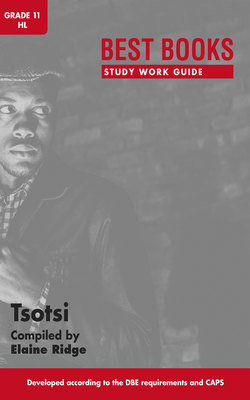Читать книгу Best Books Study Work Guide: Tsotsi Gr 11 HL - Elaine Ridge - Страница 16
На сайте Литреса книга снята с продажи.
Imagery and figurative language
ОглавлениеAlthough Fugard’s text is in many ways spare, he makes use of imagery to help the reader imagine the setting or the people or the turmoil they are experiencing. Some examples are:
“A crusty, egg-yellow stool”
“The wind passed right through him, blowing away his thoughts before he had time to recognise them.”
Other examples of figurative language from the novel are:
| SimileA direct comparison is made between two people or things using “like” or “as”. | “Her features were as puffy as well-kneaded dough.”“moving like a cornered animal trapped in a ring of ridicule.” |
| MetaphorA comparison is made between two things without using “like” or “as”. | “a way that was sharp with dog’s teeth” |
| EuphemismA word or expression is used that softens or disguises reality. | “We put him away” (Willie has died.) |
| PersonificationA non-human thing is given human qualities or abilities. | “the queue shuffled on its thousand legs” |
| IronySomething is amusing because the use or choice of a word reflects the opposite of what is intended. | “Johnboy” (His name is thought to be stylish, but in fact it combines two names that white people use for black people as generic names John + boy.) |
| OnomatopoeiaWords echo the sound that is being described. | “Ding-dong-ong-ong-ong”“Beep-beep, toot-toot” |
Table 2: Figurative language
